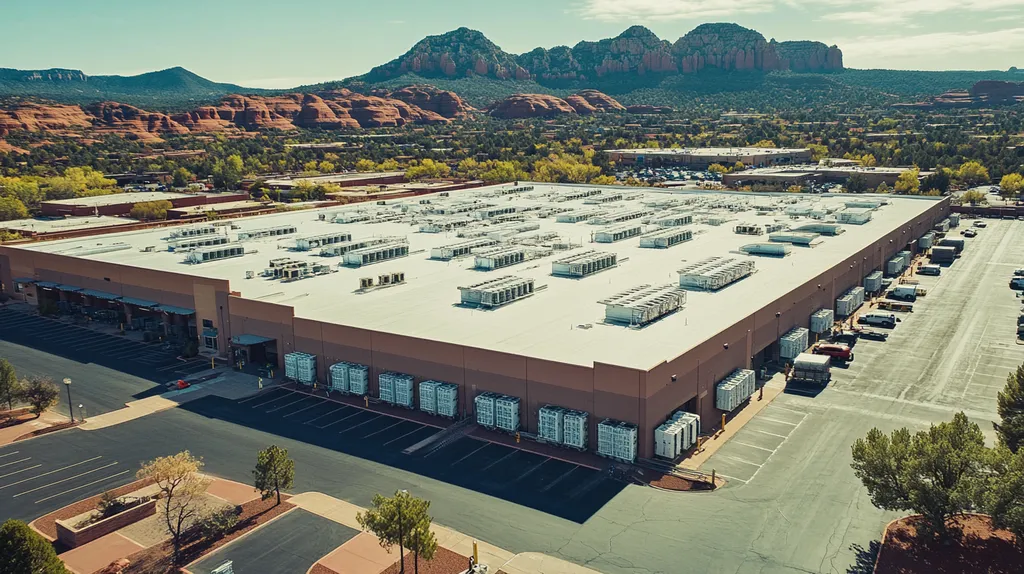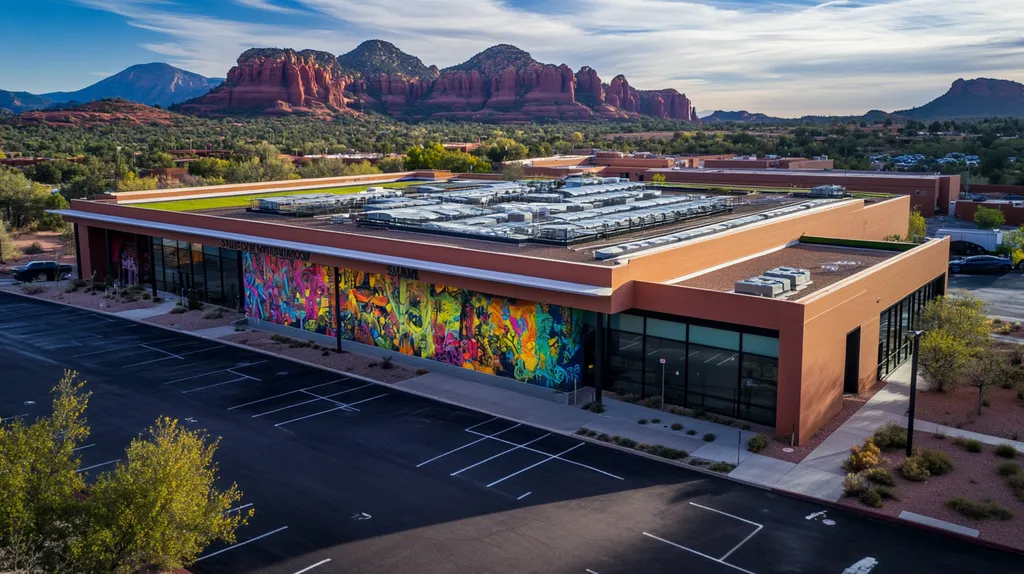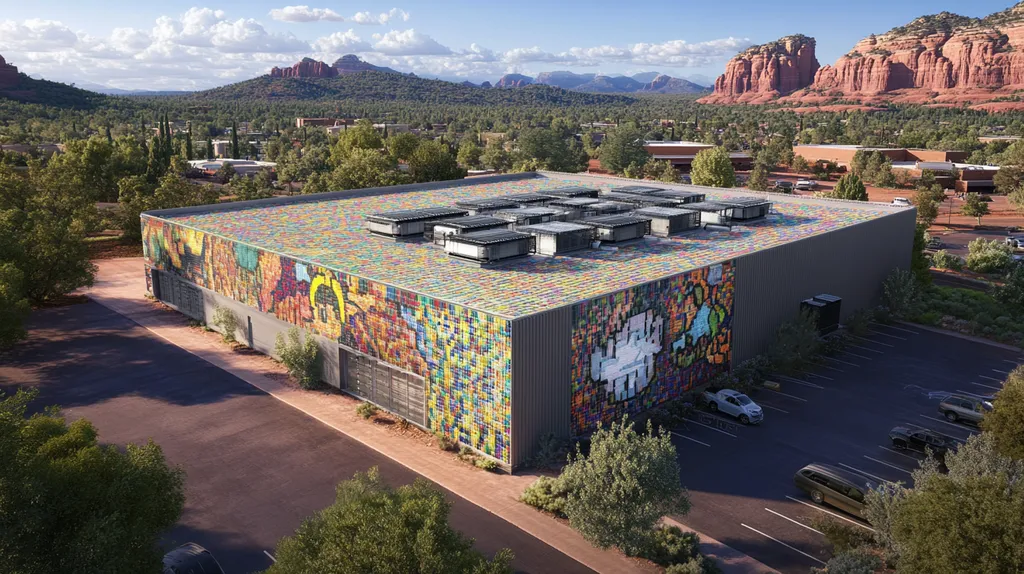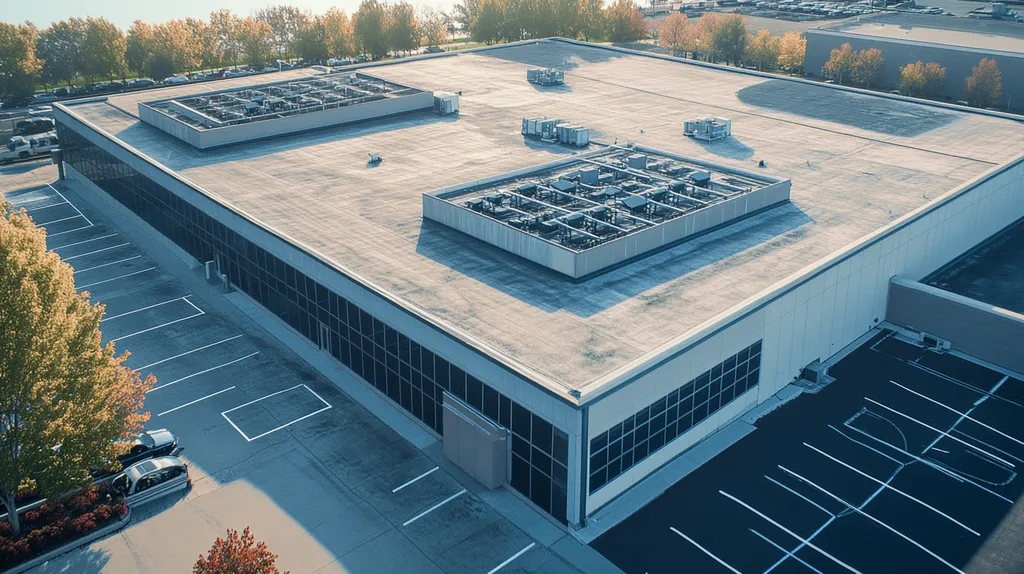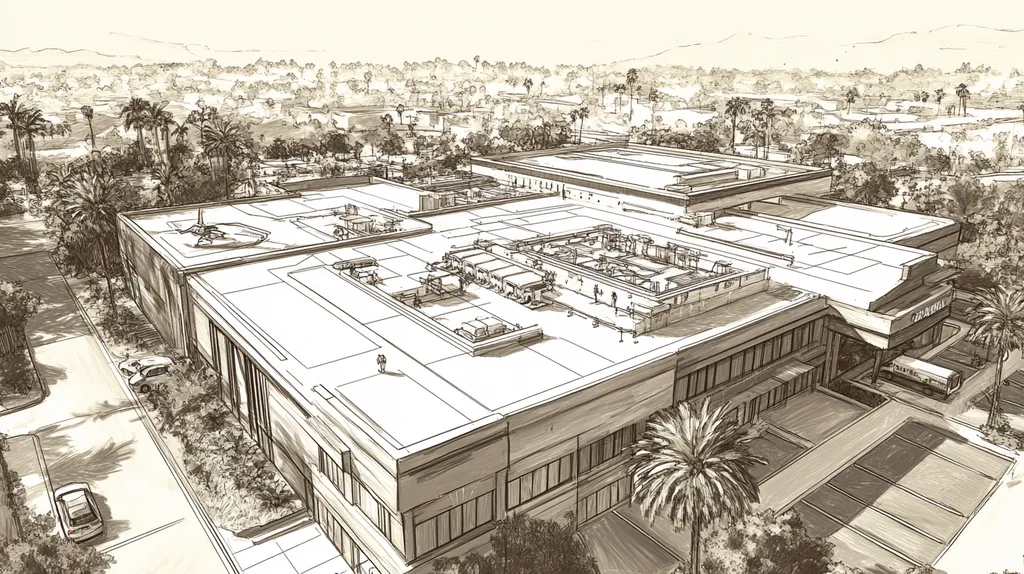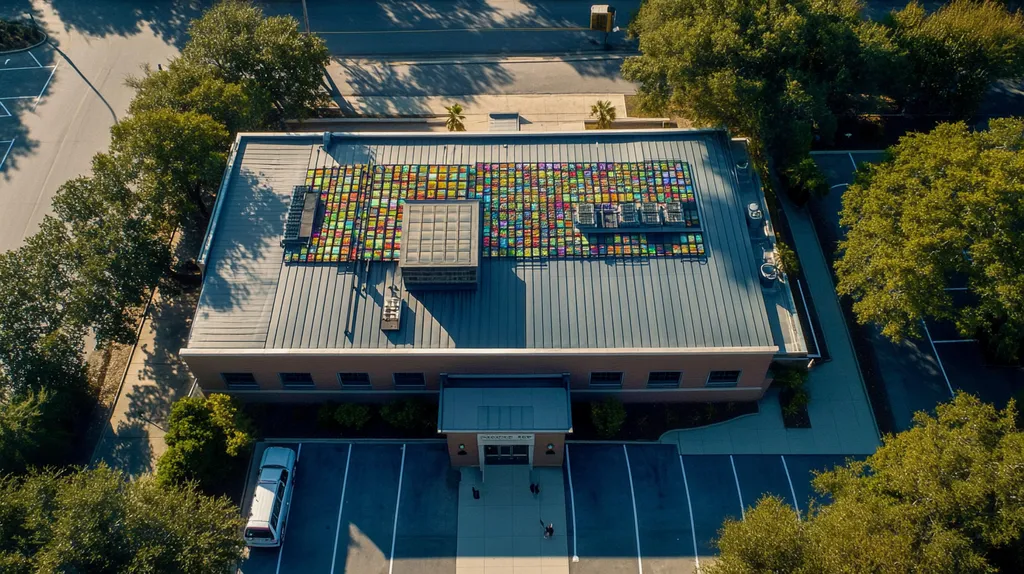In today’s industrial facilities, inadequate roof insulation can drain up to 40% of heating and cooling energy straight through the roof—a costly oversight that directly impacts the bottom line.
Understanding the key factors that influence insulation values is critical for property owners and facility managers seeking to optimize building performance and reduce operational costs.
From material selection and installation methods to climate considerations and maintenance requirements, multiple variables determine how effectively a roof system maintains desired thermal conditions.
This comprehensive guide examines the essential elements that shape insulation performance, providing actionable insights for making informed decisions about industrial roofing systems.
SECTION 1: THE BASICS EXPLAINED
Insulation values in industrial roof systems are a pivotal aspect of building management that can significantly influence energy efficiency and operational costs. When insulation is subpar, businesses face wasted energy and mounting expenses. With commercial energy prices consistently rising, investing in robust insulation is a necessity—not merely a choice—for environmentally sustainable buildings and long-term financial health.
What It Is (In Plain Language)
Insulation value measures how well a material resists heat transfer. In simpler terms, it’s about how effectively a roof keeps heat inside during colder months and blocks it out during warmer months. Higher insulation values translate to greater energy efficiency, making this quality crucial for industrial roofing systems.
The effectiveness of insulation is typically represented by R-values, which help gauge the thermal performance of roofing materials. Options range from foam boards to reflective coatings, each offering different levels of resistance. Property owners aiming to enhance their roofing systems need to grasp these materials and their corresponding R-values.
For instance, an industrial warehouse might opt for an R-30 insulation system over an R-20 option, resulting in significant savings on heating costs during winter. This choice not only leads to reduced energy consumption but also lessens environmental impact.
Effective insulation furthermore improves indoor comfort, thereby boosting employee productivity. When temperature control is optimized, the building becomes more energy-efficient and fosters a healthier working environment.
Why It Matters (To Your Building)
The insulation value of an industrial roof directly affects energy usage and the overall performance of the building. By reducing reliance on heating and cooling systems, businesses can achieve significant cost savings over time, a crucial advantage in an era of escalating energy expenses.
A well-insulated roof acts as a buffer against temperature shifts, extending the lifespan of the roofing materials and minimizing maintenance expenses. Ignoring insulation needs can lead not only to higher operational costs but also to issues like moisture buildup and potential structural damage.
The building’s energy efficiency rating, which is influenced by insulation value, plays a vital role in its attractiveness to potential tenants or buyers. Properties with superior insulation often command more interest due to their reduced operating costs.
In addition, many local governments provide incentives for insulation improvements, which can help offset initial installation costs. Being informed about insulation values allows property owners to take full advantage of these financial options.
How It Works
Insulation operates by minimizing heat transfer through three mechanisms: conduction, convection, and radiation. In the context of industrial roofing, effective insulation materials create air pockets that act as a barrier against unwanted heat loss or absorption.
The configuration and design of the roof also play a crucial role in insulation performance. For example, flat roofs may need different insulation techniques than sloped roofs to ensure optimal effectiveness, as each design influences air circulation and temperature management.
Quality installation is essential for maximizing insulation benefits. Inadequate gaps or incorrect application of materials can undermine even the best R-value options, highlighting the importance of professional work in achieving the desired results.
Furthermore, considering the local climate and specific building usage is vital when selecting insulation types. Customizing the insulation approach to fit operational requirements can transform an ordinary industrial building into a model of energy efficiency.
SECTION 2: PRACTICAL APPLICATIONS
The insulation value of an industrial roofing system is not just a technical detail—it’s a game changer for energy costs, employee comfort, and the building’s overall lifespan. Poor insulation can amplify energy bills by as much as 30%, making it essential for property owners to understand the practical applications of insulation to enhance performance and cut long-term expenses. The right insulation choice can turn a financial burden into a strategic investment.
Common Uses & Examples
Insulation is crucial in various industrial environments, where maintaining stable temperatures is vital. For instance, manufacturing facilities often utilize insulated roofing systems to avoid overheating machinery, thereby creating a safer workspace.
In warehouse settings, good insulation helps regulate internal temperatures, which is particularly important for storing sensitive goods like pharmaceuticals or perishables. Rigid foam boards or spray foam insulation are common choices, offering high R-values that significantly enhance energy efficiency.
Food processing plants benefit from moisture-resistant insulation materials that protect structural integrity while meeting stringent health regulations. Meanwhile, commercial distribution centers frequently adopt reflective roof coatings to redirect solar heat, helping manage indoor temperatures.
These examples underscore how insulation values make a direct impact on operational efficiency and compliance with industry standards, showcasing the versatility and necessity of insulated roof systems.
When You Need It Most
The need for effective insulation becomes critical during severe weather extremes. Facilities located in regions with harsh winters or blistering summers must prioritize roof insulation to prevent costly heating or cooling failures.
New construction projects present the perfect opportunity to evaluate insulation needs. Integrating high-performance insulation from the outset can lead to significant long-term cost savings. Moreover, retrofitting existing properties to bolster insulation provides another chance to upgrade thermal performance and slash energy bills.
Facilities facing unusually high energy costs should reassess their roof insulation, as simple fixes or upgrades can often deliver immediate financial relief.
In these scenarios, selecting the right insulation can protect the building investment and amplify operational efficiency, ensuring that businesses thrive no matter the weather.
Interactions With Other Systems
Insulation is a key player that interacts with various systems within the building, such as HVAC, roofing materials, and overall design. High R-value insulation not only enhances the performance of HVAC systems but also leads to a marked reduction in energy consumption.
When paired with reflective roofing materials, insulation effectively manages solar heat gain, resulting in lower cooling costs during scorching summer months.
It’s also essential to choose the appropriate insulation type based on the specific building structure. Using the wrong insulation can compromise the performance of related systems like drainage and ventilation, ultimately affecting the overall functionality of the roof.
A comprehensive understanding of these interactions enables property owners to adopt a holistic approach to building efficiency. This ensures that each component works in unison to support the overarching goals of energy savings and enhanced comfort.
SECTION 3: KEY TERMINOLOGY DECODED
Grasping the terminology around insulation values is vital for optimizing industrial roof systems. When insulation choices are misguided, facilities may face energy costs that soar by as much as 20%. This section aims to demystify critical terms and measurements related to insulation values, empowering property owners and facility managers to make smarter, more informed decisions.
Essential Terms Explained
At the heart of insulation discussions is the R-value, a measure of a material’s resistance to heat transfer. Simply put, a higher R-value means better insulation performance, which equates to energy savings in heating and cooling. Understanding this metric is essential for maintaining comfortable indoor environments.
Another important term is thermal conductivity, abbreviated as ‘k.’ This quantifies how easily a material can conduct heat; lower k-values indicate superior insulating properties. By factoring in the k-value, property owners can select the most energy-efficient roofing materials.
Additionally, thermal bridging must be considered. This occurs when heat bypasses the insulation through a more conductive material, diminishing overall efficiency. Identifying, and addressing potential thermal bridges, such as at joints and penetrations, is vital for maximizing insulation performance.
Finally, the concept of total thermal resistance encompasses the combined R-values from various roofing components, like insulation, membranes, and structural elements. This comprehensive view provides insightful data on the roof’s overall efficiency.
Industry Jargon Translated
Navigating industry terminology can be daunting for those outside the roofing sector. For instance, the term ‘cool roof’ refers to materials designed to reflect sunlight and absorb minimal heat, leading to reduced cooling costs—especially in warmer climates.
Another critical term is ‘vapor barrier,’ a protective layer that prevents moisture intrusion into insulation. Selecting the right vapor barrier is key for preserving the effectiveness of the insulation system.
Property owners might also encounter terms like ‘polyiso’ and ‘EPS,’ which are specific insulation materials. Polyisocyanurate (polyiso) boasts an impressive R-value of up to 6.6 per inch, making it ideal for flat roofs. Expanded polystyrene (EPS), while more budget-friendly, often requires greater thickness to achieve comparable insulation values.
Ultimately, grasping these terms will enable better communication with roofing contractors, ensuring optimal decisions that enhance operational efficiency and system longevity.
Measurement & Units Simplified
Measurements play a critical role in understanding insulation values. R-values quantify thermal resistance, while k-values are expressed in watts per meter-kelvin (W/m·K). Understanding these units can greatly influence material selection and installation.
A common misunderstanding is to equate R-value with overall energy efficiency. R-value exclusively gauges heat flow resistance, leaving other factors like ventilation and air leakage unaccounted for. A thorough understanding of this distinction is crucial.
Square footage is another vital component in insulation calculations. No two buildings are identical; therefore, it’s essential to evaluate insulation requirements based on specific area needs and local climate conditions.
Finally, insulation thickness impacts performance. For example, increasing the thickness of certain materials can significantly enhance R-values. By recognizing these relationships, property managers can develop roofing systems that are not only efficient but also cost-effective.
SECTION 4: DECISION FACTORS
Choosing the right insulation for industrial roof systems involves critical decisions that directly affect operational efficiency and cost. Alarmingly, the U.S. Department of Energy reports that poor insulation can lead to an energy loss of up to 30% in buildings. To make informed decisions, property owners must consider the interconnected factors of cost, performance, and durability that influence long-term sustainability and effective budget management.
Cost Considerations
While evaluating insulation options, the initial expense can feel overwhelming. However, it’s essential to recognize that investing in high-performance materials like spray foam can result in substantial long-term savings through improved energy efficiency. Property owners should carefully consider the purchase price alongside installation costs and the potential for energy savings over the lifespan of the insulation.
Different insulation materials come with various R-values, measuring their thermal resistance. Generally, higher R-values lead to lower heating and cooling expenses, offering a financial rationale for the investment. Property owners should calculate the return on investment to effectively determine the most suitable option for their specific needs.
Financial assistance, such as Energy Efficiency Programs, can further ease initial costs. Many utility companies offer incentives for insulation improvements that lower energy consumption. This can significantly impact the financial feasibility of certain insulation products.
Ultimately, considering costs requires a broad perspective that weighs upfront expenditures against long-term savings. Making informed choices in this area can yield substantial financial benefits for any industrial facility.
Performance Trade-offs
The effectiveness of insulation directly correlates with its ability to manage thermal control. However, superior insulation may involve trade-offs, influencing other crucial factors like fire safety and moisture management. Decision-makers must assess how these aspects coexist within their specific building environments.
For example, while rigid foam board insulation boasts impressive R-values, its vulnerability to moisture necessitates careful management. In humid environments, fiberglass insulation may be more suitable, providing solid performance without moisture complications, though it generally features lower R-values.
Additionally, adherence to local building codes is critical, as these regulations often establish minimum performance standards. Ignoring these can lead to fines or unanticipated costs, making it imperative to align insulation choices with compliance requirements.
Furthermore, insulation impacts a facility’s HVAC system. High-quality materials reduce the load on heating and cooling systems, leading to longer equipment lifespans and lower maintenance costs. Careful examination of these performance trade-offs is essential in achieving an optimal balance.
Lifespan & Durability Factors
The lifespan and durability of insulation materials play a major role in their overall value. While lower-cost options may seem appealing, they often necessitate frequent replacements, leading to higher cumulative expenses over time. Opting for durable insulation can translate into significant long-term savings.
For instance, high-density spray foam insulation is well-known for its longevity and ability to withstand environmental challenges compared to traditional fiberglass. This durability results in fewer necessary repairs and less downtime for operations, justifying its higher initial cost.
Furthermore, insulation choice can directly affect the roof’s structural integrity. Insufficient insulation can lead to moisture accumulation, resulting in rot and decay in the long run. Prioritizing protection for the building envelope is essential, guiding decisions toward materials that combine both high performance and durability.
Lastly, warranties for insulation materials should be considered. Reputable manufacturers often provide warranties assuring performance over time, giving property owners confidence in their investment. Evaluating insulation options with respect to expected lifespan and reliability is vital for making sustainable roofing decisions.
SECTION 5: COMMON CHALLENGES
Maintaining optimal insulation values in industrial roof systems is fraught with challenges that can impede energy efficiency and escalate operational costs. Property owners must remain vigilant, as even a modest dip in insulation performance can lead to substantial energy losses—around 20% more in heating and cooling expenses with just a 10% drop in insulation value. This section explores common issues, warning signs to watch for, and preventative strategies to safeguard insulation integrity.
Frequent Problems & Solutions
One prevalent issue in industrial roofing is moisture intrusion, which can compromise insulation integrity, resulting in mold growth and structural damage. Conducting regular inspections can help identify these moisture-related problems early, preventing costly repairs.
Another challenge arises from the use of subpar materials that fail to meet essential performance standards. Upgrading to high R-value insulation, such as polyurethane foam with an impressive R-value of 6.6 per inch, can dramatically enhance a roof’s efficiency and longevity. Property owners should prioritize durable materials with proven track records.
Inadequate ventilation poses yet another challenge, leading to heat buildup and diminished insulation effectiveness. Addressing ventilation concerns through proper roof design and installation can prevent excessive heat retention and associated energy waste. Employing knowledgeable contractors can facilitate effective solutions.
Lastly, age-related deterioration of existing insulation can lead to reduced thermal performance. Retrofitting with modern insulation options can restore energy efficiency while extending the roof’s lifespan, ultimately avoiding expensive repairs.
Warning Signs To Watch For
Spotting insulation issues before they escalate can save property owners substantial costs. One key warning sign is visible damage on interior ceilings or walls, which often indicates potential moisture problems. Property managers should be vigilant for stained areas and peeling paint as indicators of underlying issues.
Temperature inconsistencies within the facility can also signal insulation deficiencies, such as inadequate R-values or thermal bridging. Abnormally high energy bills may suggest the insulation is failing to perform effectively, warranting immediate investigation.
A noticeable uptick in pest activity can point to gaps or weaknesses in insulation, offering rodents and insects easy access. Regular inspections should include checks for signs of pest intrusion to ensure that these problems don’t compound.
Lastly, if drafts are felt indoors, it may indicate compromised insulation integrity. Conducting routine air leakage tests can help property owners identify vulnerabilities and rectify them promptly.
Preventative Approaches
Proactive maintenance is essential for preventing insulation challenges. Regular inspections are crucial for assessing insulation material integrity. Seasonal checks can help catch early signs of wear, moisture, or damage, enabling timely corrective measures.
Investing in quality insulation materials from the outset can prevent future complications. Insulation products that carry long-term warranties often indicate reliability and performance, providing peace of mind. Additionally, ensuring that materials are suited to local climate conditions enhances insulation effectiveness.
Property owners should consider upgrading insulation during roofing repairs or replacements. This strategic move maximizes investment and improves overall energy efficiency. Collaborating with experienced roofing professionals ensures adherence to optimal performance standards.
Finally, educating staff on insulation maintenance best practices is vital. Property managers should be trained to identify potential issues and recognize the critical role of effective insulation in the overall performance of the facility.
SECTION 6: NEXT STEPS & RESOURCES
Understanding insulation values in industrial roof systems is not just important—it’s essential for property owners and facility managers. Decisions made regarding insulation affect energy efficiency, operational costs, and even the longevity of roofing systems. Missteps can lead to unexpected financial burdens or environmental repercussions. Therefore, it is critical to engage thoroughly—ask the right questions, adhere to industry standards, and stay committed to ongoing education about insulation practices.
Questions To Ask Providers
As you evaluate insulation options for your industrial roof system, asking informed questions is vital to avoiding costly mistakes. Start by inquiring about the R-value of the proposed insulation materials to ensure they comply with local building codes. Understanding how these materials are installed and their long-term durability is equally crucial.
Explore how the provider will assess the unique insulation requirements of your building. Each facility has its own needs based on factors like climate, usage, and structural design. Confirm that they take these specifics into account in their recommendations.
Don’t forget to discuss warranty options and service agreements. A trustworthy provider will back up their work with warranties that guard against defects and guarantee performance.
Lastly, have a conversation about potential energy savings and return on investment. A knowledgeable provider should present case studies or data illustrating how effective insulation can enhance financial outcomes over time.
Industry Standards & Guidelines
Becoming well-versed in industry standards is crucial for making informed decisions about insulation. Organizations like the American Society for Testing and Materials (ASTM) offer guidelines that outline minimum insulation values and the performance metrics required for materials. Adhering to these standards helps ensure compliance with energy efficiency benchmarks.
The Energy Star program is another key resource, setting acceptable insulation levels for commercial facilities. It provides a clear framework for property owners to assess their energy efficiency and identify actionable improvement steps.
Staying current with local building codes is also vital, as these regulations differ by region and can dictate insulation requirements. Engaging with local regulatory bodies helps ensure compliance and promotes safe, efficient building practices.
Lastly, consider leveraging resources from the National Roofing Contractors Association (NRCA). Their publications and training programs offer invaluable insights about best practices and cutting-edge insulation technologies.
Further Learning Simplified
Ongoing education is crucial for deepening understanding of insulation values. Online platforms, including webinars and industry forums, provide accessible learning opportunities. Look for programs specifically focused on roofing insulation trends and their influence on operational effectiveness.
Reading industry publications is another effective way to stay informed about new technologies and best practices. Subscribing to updates from trade organizations can keep you informed about advancements in materials and installation techniques.
Networking at industry events fosters valuable connections and collaborative knowledge sharing. Engaging with peers facing similar challenges can result in innovative solutions and improved practices.
Finally, consider enlisting a consultant with expertise in industrial roofing. Their specialized insights can aid in informed decision-making, ultimately enhancing the effectiveness of insulation systems.
The Bottom Line
With energy costs continuing to rise by 5-7% annually, the stakes for proper industrial roof insulation have never been higher.
Understanding and optimizing insulation values represents a critical opportunity to reduce operational expenses by 20-40% while extending roof system longevity.
From material selection and installation quality to ongoing maintenance and performance monitoring, every factor influencing insulation effectiveness demands careful consideration.
Property owners and facility managers who take a proactive approach to insulation – leveraging industry standards, embracing new technologies, and partnering with qualified professionals – position their buildings for superior performance and sustainable operations.
The future of industrial roofing lies in maximizing insulation efficiency, making this knowledge essential for anyone responsible for commercial building operations.
FREQUENTLY ASKED QUESTIONS
Q. What is insulation value for commercial roofs?
A. Insulation value measures how well a material resists heat transfer, influencing energy efficiency. Higher insulation values result in better temperature control, helping maintain comfort while reducing operational costs. This metric is essential for making informed decisions about the roofing system.
Q. How does insulation affect industrial roof performance?
A. Improved insulation directly enhances operational efficiency and reduces energy bills. It regulates internal temperatures, minimizing reliance on heating and cooling systems, which can lead to significant savings over time. Moreover, well-insulated roofs can extend the lifespan of roofing materials.
Q. What are key terms for industrial roof insulation?
A. Key terms include R-value, indicating thermal resistance, and thermal conductivity, which measures heat conduction efficiency. Understanding these concepts allows property owners to choose optimal materials, improving energy conservation and increasing overall insulation effectiveness.
Q. What factors should influence insulation decisions for commercial roofs?
A. Important factors include cost, performance, and durability of insulation materials. Understanding the long-term benefits of high-performance options, along with local building codes and warranties, can guide property owners in making balanced decisions that enhance their investment.
Q. What common challenges exist for industrial roof insulation?
A. Common challenges include moisture intrusion, inadequate ventilation, and the use of subpar materials. Regular inspections and maintenance help identify issues early, preventing costly repairs and preserving insulation performance. Proactive management is crucial to maintaining effective insulation values.
Q. How can I improve my industrial roof insulation?
A. Improving insulation can involve retrofitting with higher R-value materials and ensuring proper installation. Regular inspections, addressing moisture issues, and upgrading during roofing repairs also contribute to enhanced insulation effectiveness and energy efficiency in your commercial roof system.
Q. What next steps should I take for better insulation?
A. Begin by consulting with qualified insulation professionals for assessments tailored to your facility. Understanding local building codes, engaging with reputed suppliers, and considering ongoing education about insulation systems can empower you to make informed decisions for your property’s needs.

